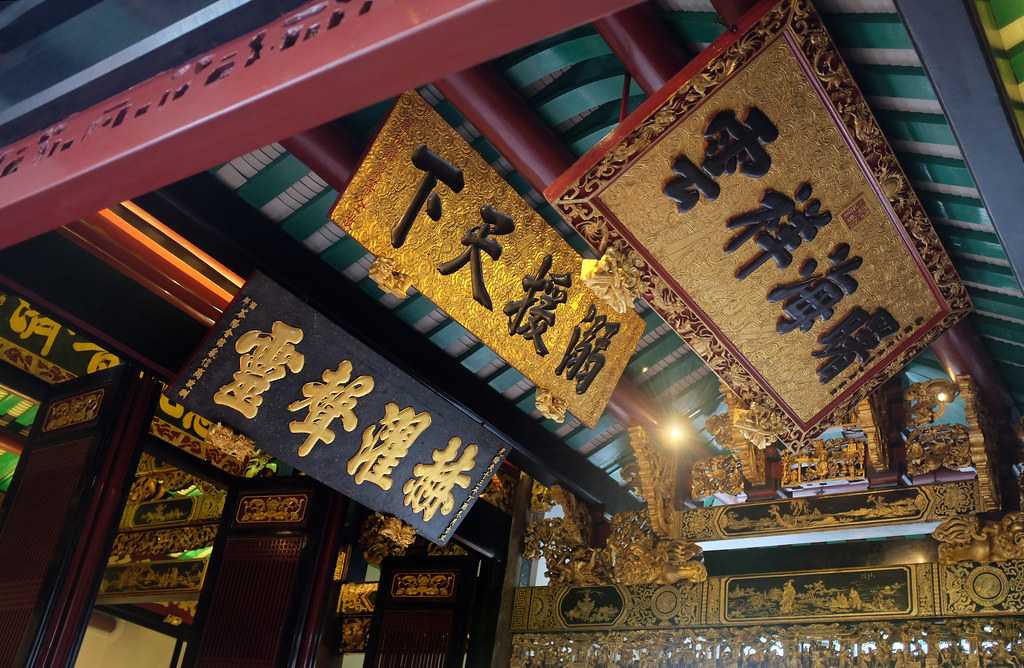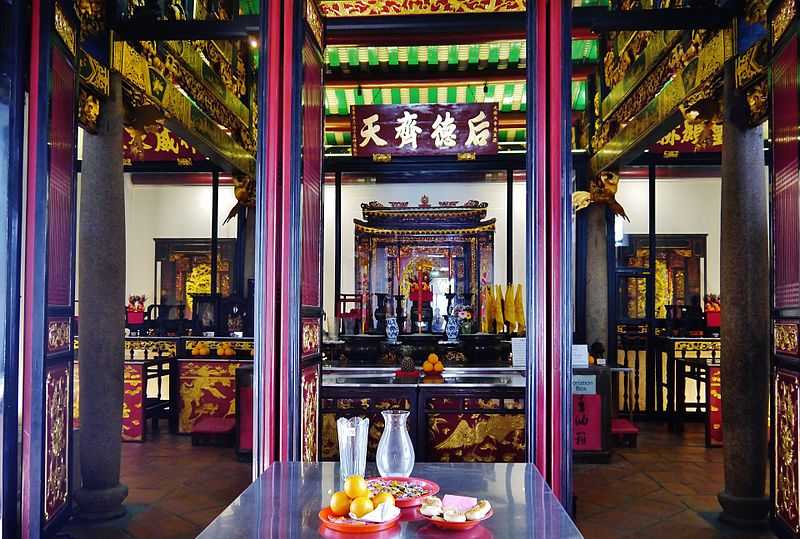Yueh Hai Ching Temple
₹ 271 onwards
View Singapore PackagesWeather :
Tags : Buddhist Temple
Timings : 8:00 AM - 5:00 PM
Time Required : 1 - 2 hours
Entry Fee : No Entry Fee
Planning a Trip? Ask Your Question
Yueh Hai Ching Temple, Singapore Overview
Well known as Wak Hai Cheng Bio, Yueh Hai Ching Temple is one of the oldest Taoist places of worship in Singapore. Located in Raffles Place in the heart of Singapore’s central business district, the temple is dedicated to Xuan Tian Shang Di and Tian Hou Sheng Mu, and is also known as the 'Temple of Love'. Yueh Hai Ching Temple has a mesmerising asymmetric layout that reflects Chinese architecture with immense Taoist influence making it a must-visit for people who love exploring ancient architecture or have a spiritual bent of mind.
In Teochew dialect, the name Yueh Hai Ching Temple implies “Temple of the calm Cantonese Sea.” Sailors used to visit this holy place to express gratitude to the Gods for a safe journey. Eventually, Yueh Hai Ching Temple became a shrine of hope for lovelorn singles yearning for a soulmate, leading to it being called as the Temple of Love. The gorgeous Taoist Temple is divided into two blocks, each housing its own presiding deity. The left block is dedicated to Ma Zu, or Tian Hou Sheng Mu, the Mother of Heavenly Sages. She is believed to ensure that the travellers embark on a safe journey. The block on the right is devoted to the God of Business, Xuan Tian Shang Di, also known as Duo Lau Yah, and Yue Lao, the deity of love and marriage. The glorious temple also houses the statue of the Gambler Brother, with coins around his neck. He is said to bless people with good luck and wealth.
Read More on Yueh Hai Ching Temple
Architecture of Yueh Hai Ching Temple
- Yueh Hai Ching Temple has been built on the lines of traditional Feng Shui with due importance given to the directions, flow of fresh air and penetration of sunlight inside the temple.
- The stunning has a beautiful enclosed courtyard and gardens that add to its appeal. The courtyard is paved aesthetically with stones. Again, these open spaces are designed to ensure ample air and sunlight. The fresh environment makes the temple all the more welcoming.
- This Taoist temple is culturally enriched with stupendous works of art. These include cultural artefacts like temple plaques, couplets, inscriptions, bells, beams and placards. Some artworks date to early 1800s.

Overhanging plaques at the temple (Source) - The highlight of the Yueh Hai Ching Temple is its roof structure and design. The roof of Xuan Tian Shang Di is ornamented depicting two dragons protecting a sacred blazing pearl that stands on a metal rod. The dragons are symbolic of safety, security, power, courage and justice. The roof of the Tian Hou Sheng Mu is more of a pictorial representation of a city which is being guarded against demonic and evil forces by powerful dragons. It is believed that these dragons have mighty powers to transmute to evil forces into positive energy.
- The carvings at Yueh Hai Ching Temple appear three dimensional. These are intricately done skilfully on wood and are embellished with gold foil and paint.
- Considering the art of Feng Shui, the Temple of Love has incorporated different colours for different directions or elements keeping in mind what the directions represent and what does the colour stand for. For example - Blue is the colour of the sky and belongs to the east direction (used mainly on beams and plaques). Similarly yellow stands for grandeur and is incorporated in statues and Door Gods. Red is for overall luck and prosperity. Being linked to the strong yang element, it is used on doors and roofs. Another colour predominantly found here is green (water element) on roof alters, boundary walls and as a plaque background.

Historical Significance
It was between 1852 and 1855 when the beautiful structure of the temple, as it stands today, was created. Back then, Wak Hai Cheng Bio Temple also doubled as a community centre where people shared news and provided support during the First World War. The temple underwent no less than two major renovations, the first being between 1995 and 1997, while the second from 2011 to 2014, but the main structure remained intact.
How to Reach Yueh Hai Ching Temple
Bus: Take the bus 530, 588, 599, 186, or 970 and get down at the Church Street Bus Stop. From there, turn right at Phillip Street to reach the temple.
Top Hotel Collections
Top Hotels Near Yueh Hai Ching Temple
Yueh Hai Ching Temple Reviews

Have a Question on Yueh Hai Ching Temple?

experience.